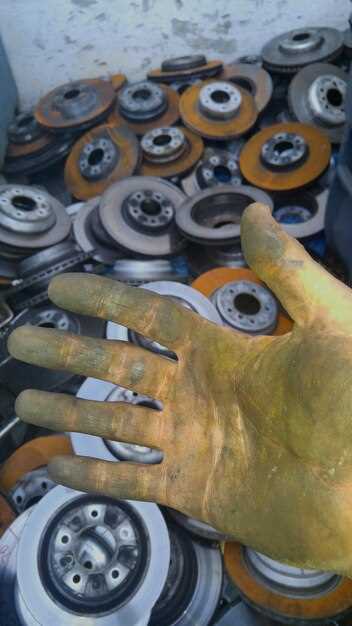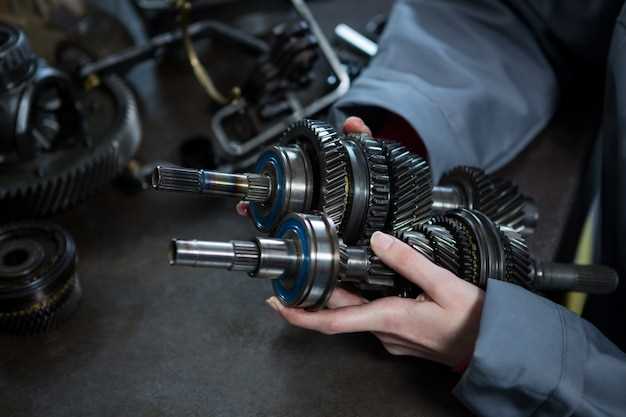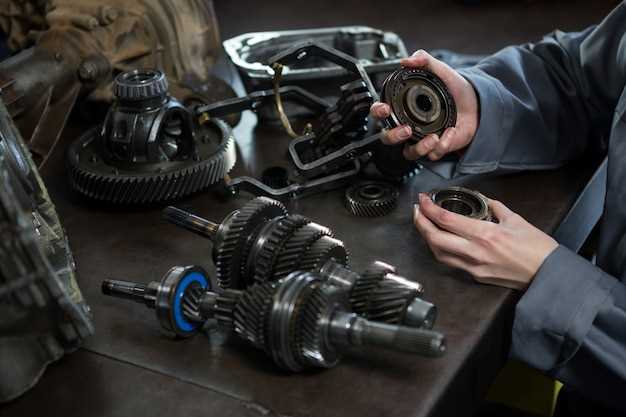
Heavy-duty clutch systems play a crucial role in the performance and efficiency of commercial vehicles. Proper maintenance and timely repair of these systems are essential to ensure longevity and reliability. This guide aims to provide a comprehensive overview of servicing heavy-duty clutch systems, focusing on the manual procedures that mechanics should follow to achieve optimal results.
Understanding the mechanics of clutch systems is vital for any repair technician. The clutch acts as a critical interface between the engine and the drivetrain, facilitating smooth power transfer. When issues arise, it can lead to significant disruptions in vehicle operation. Therefore, having a solid grasp of repair techniques and maintenance practices is not just beneficial but necessary for maintaining peak performance.
This guide will cover essential topics such as diagnosing common clutch problems, understanding component wear, and following step-by-step instructions for effective repairs. With the right knowledge and tools at your disposal, servicing heavy-duty clutch systems can be a straightforward process that directly contributes to the reliability and efficiency of your vehicles.
Step-by-Step Process for Diagnosing Clutch Issues
Diagnosing clutch issues in a heavy-duty manual transmission system requires a systematic approach. Start by gathering essential information regarding the symptoms reported by the driver. Common complaints include difficulty in shifting gears, clutch slippage, or abnormal noises from the clutch area.
Next, perform a visual inspection of the clutch system. Check for signs of fluid leaks, particularly from the hydraulic components, as this could indicate a loss of pressure affecting clutch operation. Inspect the clutch pedal and linkage for damage, ensuring that there are no obstructions preventing full engagement or disengagement.
After the visual check, conduct a road test to observe the clutch behavior under normal driving conditions. Pay attention to any unusual vibrations or sounds during gear changes. Test the clutch engagement point by pressing the pedal slowly to determine if it feels too soft or too hard, which can indicate underlying problems such as a worn clutch or damaged hydraulic components.
If the initial diagnostics suggest internal issues, it may be necessary to access the transmission for a more detailed examination. Remove the transmission from the vehicle, giving you the opportunity to inspect the clutch assembly directly. Look for signs of wear, such as glazing on the clutch disc or a warped pressure plate.
Check the release bearing for proper function, as an issue here can affect clutch operation. Ensure the flywheel surface is smooth and free of cracks or deep scoring. If any parts show significant wear or damage, replace them to restore optimal clutch performance.
Finally, reassemble the clutch system and perform a bleed of the hydraulic lines, if applicable, to eliminate air bubbles. After reinstallation, conduct several test drives to ensure that the clutch engages and disengages smoothly, confirming that the issue has been resolved.
Best Practices for Clutch Repair in Manual Transmissions

When it comes to clutch repair in manual transmissions, adhering to best practices is crucial for ensuring performance and longevity. Proper diagnosis and quality workmanship can prevent future issues and enhance vehicle reliability.
1. Accurate Diagnosis: Start by accurately diagnosing the problem. Symptoms such as slipping, difficulty in shifting, or unusual noises can indicate clutch wear or failure. Use diagnostic tools to identify underlying issues related to the transmission system.
2. Quality Parts: Always opt for high-quality replacement components. Using original manufacturer parts or reputable aftermarket options is essential for maintaining the integrity of the clutch system and ensuring compatibility with the transmission.
3. Proper Alignment: During installation, ensure that the clutch disc is perfectly aligned with the flywheel and pressure plate. Misalignment can lead to uneven wear and operational issues.
4. Thorough Cleaning: Before assembling new components, thoroughly clean all relevant surfaces. Remove dirt, debris, and old lubricant to prevent contamination and ensure optimal functionality of the clutch.
5. Correct Torque Specifications: Adhere to the manufacturer’s recommended torque specifications when fastening components. Over-tightening or under-tightening can lead to premature failure and operational problems in the transmission.
6. Test the System: After completing the repair, conduct a thorough test of the clutch system. Engage and disengage the clutch several times to ensure smooth operation and check for any abnormal noises or behavior.
7. Regular Maintenance: Encourage regular maintenance checks after the repair. Timely inspections can help identify wear early, preventing more extensive damage to the transmission and prolonging the lifespan of the clutch system.
By following these best practices for clutch repair in manual transmissions, mechanics can ensure robust performance and reliability, minimizing the risk of future complications.
Tools Required for Heavy-Duty Clutch Maintenance

Proper maintenance of heavy-duty clutch systems is critical for ensuring optimal performance and longevity. To effectively service these systems, a specific set of tools is required. Each tool plays an essential role in the inspection, repair, and adjustment processes.
One of the most important tools is the clutch alignment tool. This tool ensures that the clutch disc is correctly aligned with the flywheel and pressure plate. Proper alignment is crucial to prevent premature wear and ensure smooth engagement.
A torque wrench is also essential when working with clutch assemblies. It allows you to apply the correct amount of torque to bolts, which is vital for securing components without causing damage. Always refer to the vehicle’s manual for the specified torque settings.
Additionally, a flywheel turning tool is necessary for rotating the flywheel during inspection or replacement procedures. This tool makes it easier to reach all parts of the clutch system while ensuring that the engine is in the correct position.
A set of standard and metric wrenches will be needed for various fasteners throughout the clutch assembly. Socket sets, including deep sockets, can provide better access to tight spaces. Pliers, screwdrivers, and a hammer should also be on hand for general adjustments and repairs.
For inspecting clutch components, a digital caliper or micrometer can help measure the thickness of the clutch disc and pressure plate, ensuring that they meet the manufacturer’s specifications. If any component shows signs of wear or damage, it should be replaced immediately to avoid further issues.
A hydraulic jack and jack stands are necessary for safely lifting the vehicle during maintenance. Ensuring safety while working underneath heavy-duty machinery is paramount.
Finally, a reliable service manual is an indispensable resource. It provides detailed instructions and specifications specific to the heavy-duty vehicle, guiding technicians through the repair process and ensuring that all steps are performed correctly.




